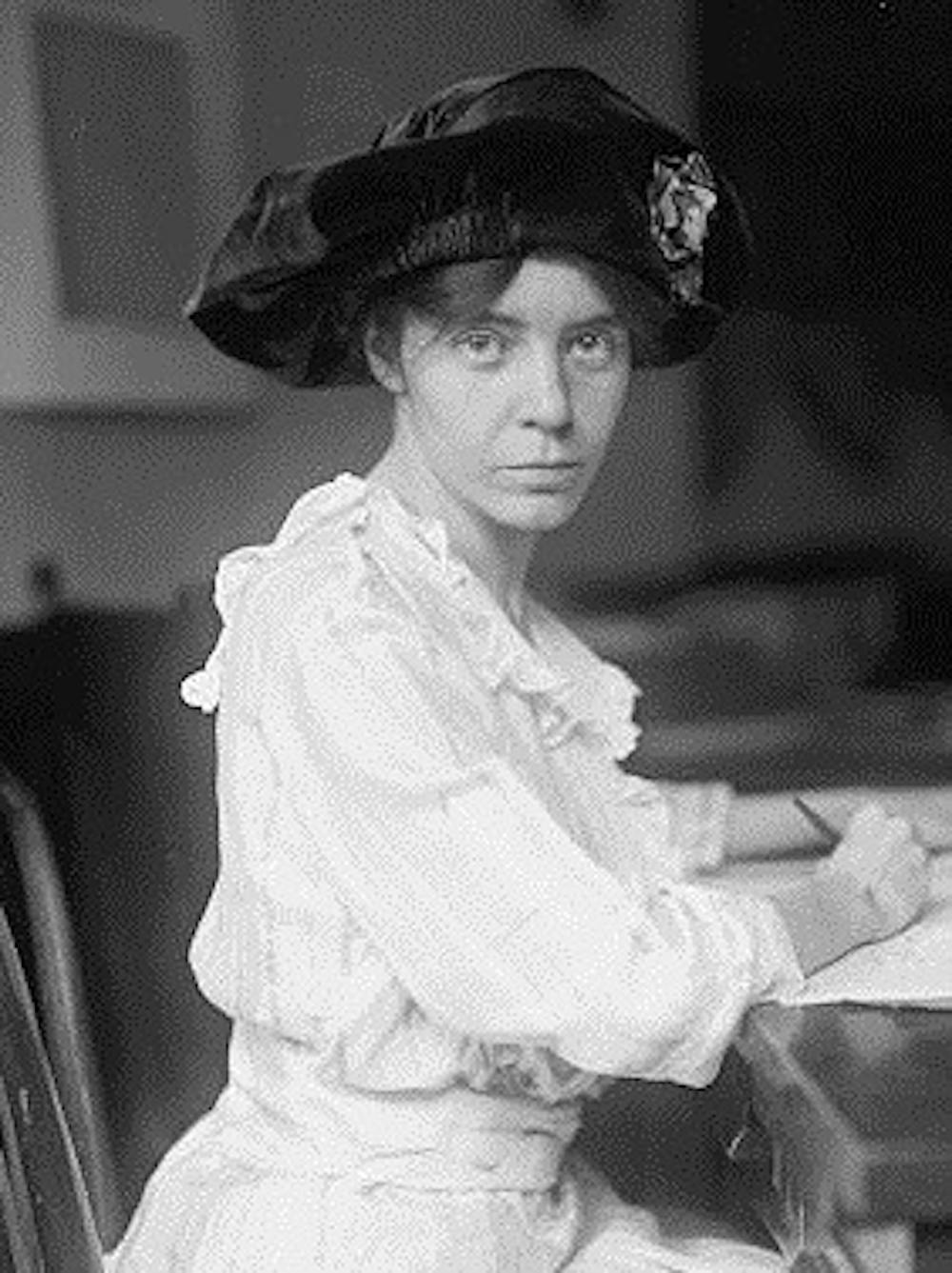
Alice Paul, who received her M.A. from Penn in 1907 and her Ph.D. in 1912, will be featured with other women's suffrage activists on the back of the redesigned $10 bill. | Photo courtesy of Wikimedia Commons
Move over, Ben — another Penn person has made her way onto money.
20th century activist Alice Paul will join other members of the women’s suffrage movement on the back of the $10 bill, the United States Treasury Department announced Wednesday.
Paul, who co-founded the National Women’s Party and is known for her tenacious protests of Woodrow Wilson’s administration, earned her master's degree in sociology from Penn in 1907 and her doctorate in 1912. The Penn Archives website describes Paul — after whom the Alice Paul Center for Research on Women, Gender, and Sexuality at Penn in named — as "an aggressive leader of the women's movement in the United States."
"I think it's very exciting and empowering, and good that there’s recognition that there is work that women have done to contribute to this country over its history," College junior and newly-elected Undergraduate Assembly president Kat McKay said. "When I saw that the one woman, Alice Paul, was from Penn, I was really viscerally happy about that.”
Though not the most well-known leader of the suffrage movement, Paul was instrumental in the fight for the 19th Amendment, which prohibits the United States from denying a person the right to vote based on sex. The founder of the Silent Sentinels campaign, Paul led nonviolent demonstrations for months outside of the White House to protest Wilson’s and the Democrats’ opposition to a women’s suffrage amendment.
After receiving a seven-month jail sentence related to her role in the protests, Alice Paul launched a hunger strike to protest the prison’s poor conditions. She was ultimately sent to the prison’s psychiatric ward and was force-fed through a feeding tube.
Paul and other suffragists were released after little more than a month in prison, and their endurance paid off when the 19th Amendment was passed amid pressure from the demonstrators and the publicity of Paul’s hunger strike.
Her story was portrayed in the 2004 movie "Iron Jawed Angels," with Paul being portrayed by actress Hilary Swank.
This is not Paul’s first stint on American money. As part of the First Spouse Gold Coin Program, Paul’s likeness was featured in 2012 on a special edition golden dollar. While Paul was never married to a president, she was selected to represent Chester Arthur’s time in office, as Arthur was a widower.
Other branches of the university expressed excitement about Paul's place in the redesign.
"Alice Paul devoted her entire life to securing equal rights for all women," wrote Executive Director of Alumni Relations Elise M. Betzin in an emailed statement. "There is no doubt that her time at Penn in the early 1900s influenced and informed the revolutionary work she did to change the U.S. Constitution to give women the right to vote."
Paul joins other suffrage stalwarts Susan B. Anthony, Elizabeth Cady Stanton, Sojourner Truth and Lucretia Mott on the back of the $10 bill, which will still feature former Secretary of the Treasury Alexander Hamilton on the front. Abolitionist Harriet Tubman, who orchestrated the Underground Railroad, will replace Andrew Jackson on the front of the $20 bill.
“We think it is wonderful that all of these incredible women — including Paul are going to be featured so prominently,” wrote Dr. Felicity Paxton, Director of Penn Women's Center. “We hope that this unprecedented circulation, via U.S. currency, of images celebrating powerful female social justice leaders will inspire more conversations about the vital roles women have played in changing history."
The Daily Pennsylvanian is an independent, student-run newspaper. Please consider making a donation to support the coverage that shapes the University. Your generosity ensures a future of strong journalism at Penn.
DonatePlease note All comments are eligible for publication in The Daily Pennsylvanian.





